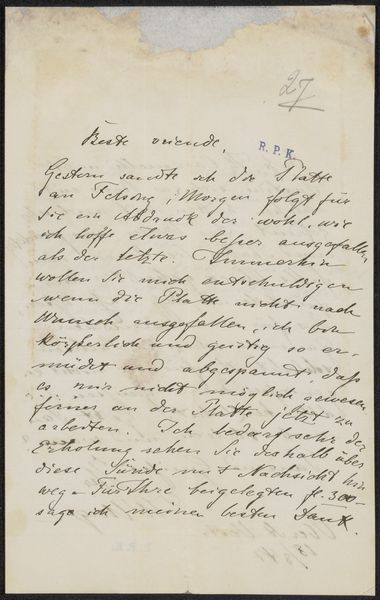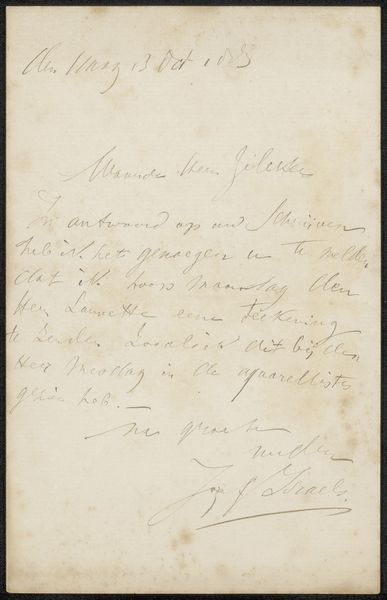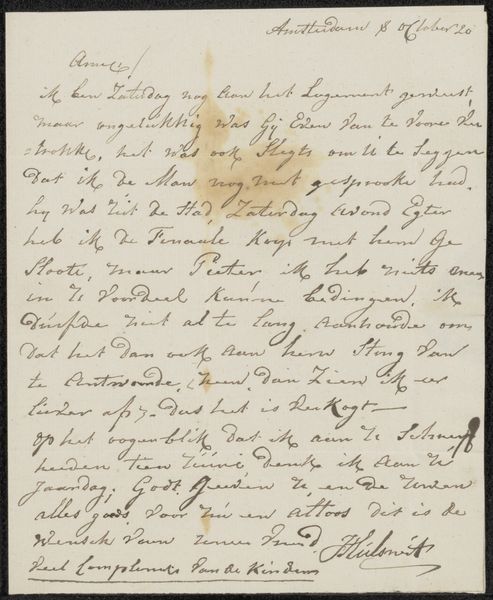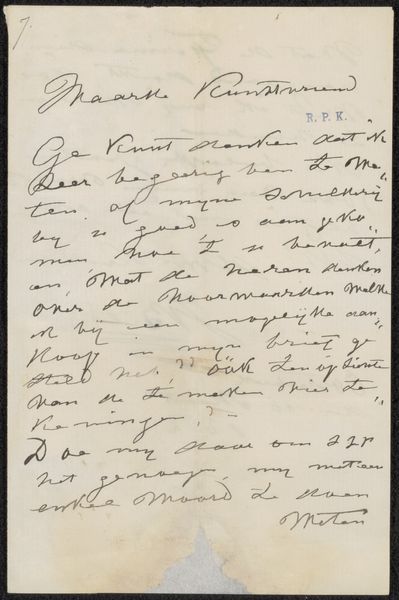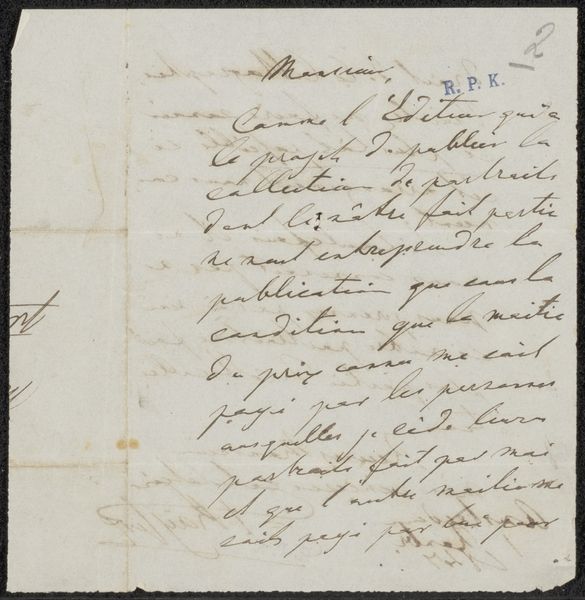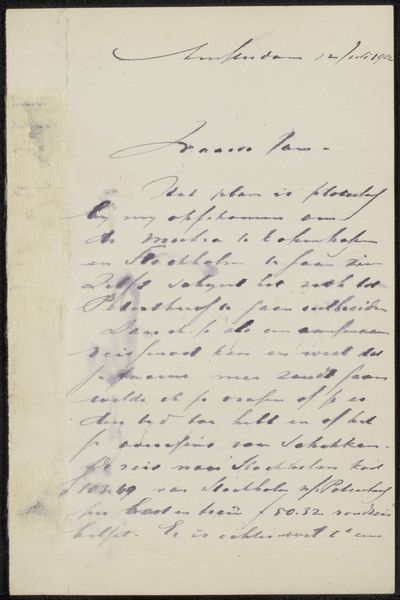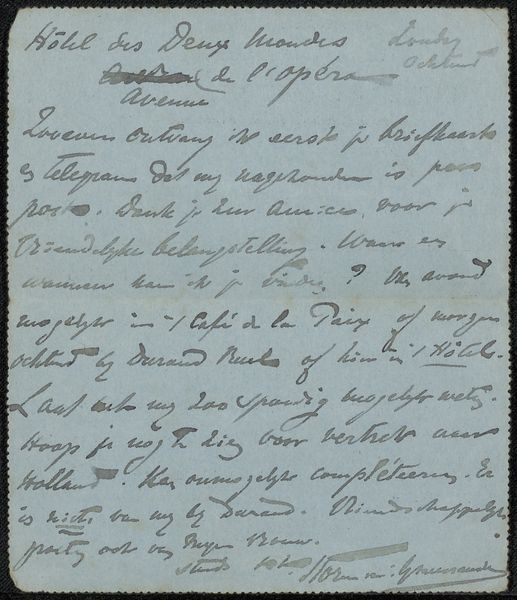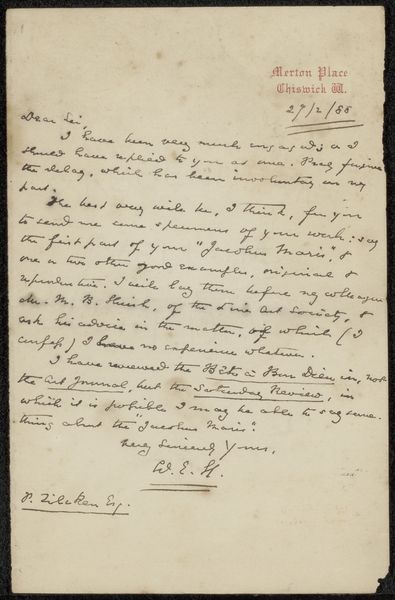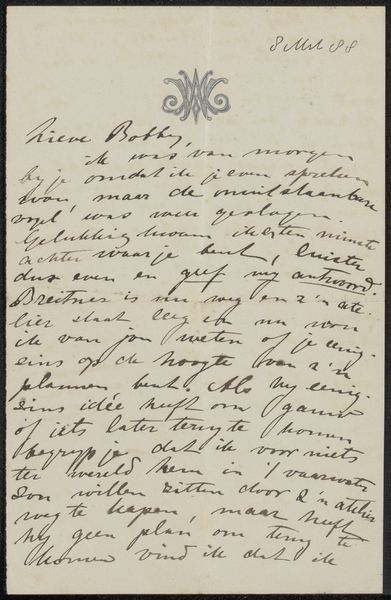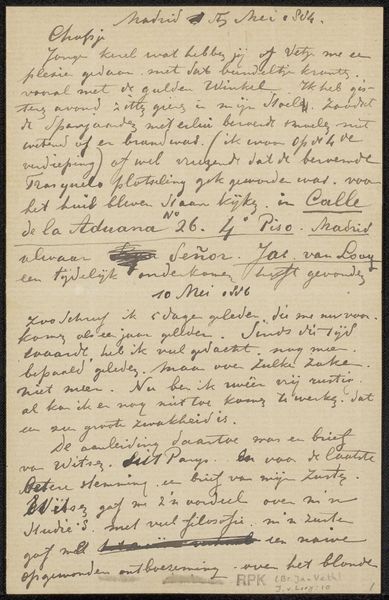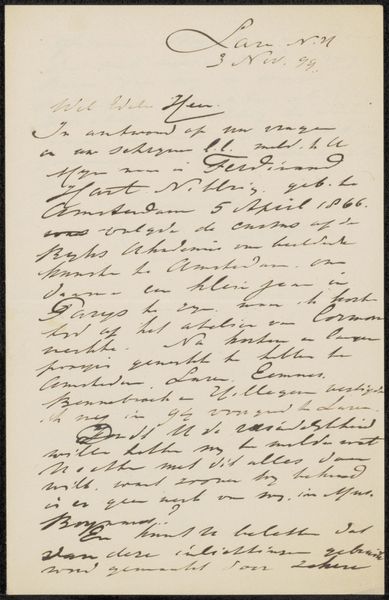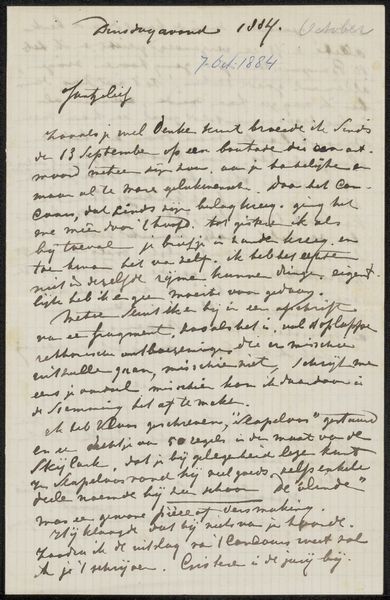
drawing, paper, ink
#
drawing
#
paper
#
ink
Copyright: Rijks Museum: Open Domain
Curator: Before us, we have a drawing in ink on paper titled "Brief aan Philip Zilcken," possibly created in 1919 by Rose Imel. Editor: The letter immediately strikes me as intimate. Its compact size, along with the density of the handwriting, exudes a certain warmth, like a handwritten note always does. There is also something visually pleasing in its rhythmic variations of line thickness and form. Curator: The ink on paper medium is indeed conducive to immediacy, offering the viewer a raw, unfiltered glimpse into Imel's thoughts and sentiments towards Philip Zilcken, a fellow artist and a figure in the Dutch art world. Editor: Focusing on the purely visual aspects, the elegant cursive is interesting for its aesthetic as much as it conveys linguistic content. Notice how the letterforms become almost abstract shapes in their repetitions, and the darker flourishes of ink emphasize tonal variation. I would be interested in researching graphology. Curator: Precisely. The structure of the composition reinforces this, as the lines create distinct areas and movement. This would suggest that the context is secondary and only understood to those who could actually understand it. As an artist, however, its line composition, visual hierarchy, and balance evoke semiotic relations through its purely material attributes, rather than deciphered meaning. Editor: From a historical point of view, considering the time frame of around 1919, this personal communication could be examined within the scope of artist networks during that era. Such letters would likely carry socio-political currents within the broader context of art production and dissemination. This one seems to emphasize personal ties rather than political alliances, but all artists’ correspondence exists in some relationship with a wider social sphere. Curator: Well, its subjective reception cannot escape interpretation. Its purpose in today's collection still lends to it a formal, intellectual aesthetic, doesn't it? Editor: Of course! We find different resonances according to different contexts, and that's partly what keeps art vital across time. Curator: A delightful note on which to conclude our examination. Thank you. Editor: Indeed!
Comments
No comments
Be the first to comment and join the conversation on the ultimate creative platform.
